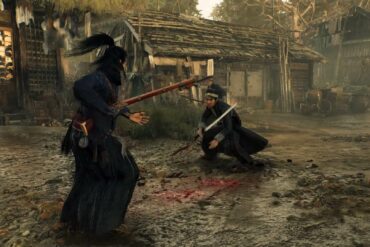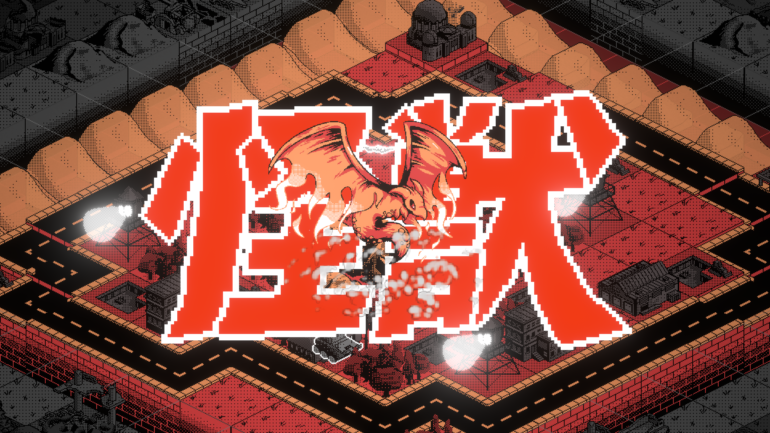Taking direct inspiration from the NES cult classic Godzilla 2: War of the Monsters, developer Foolish Mortals picks up right where Toho left off. With a beautifully crisp retro flair and an addictive loop, Kaiju Wars modernizes its influences with excellence. It provides an accessible strategy experience with a 30-hour campaign, a custom scenario creator, weekly missions, and more.
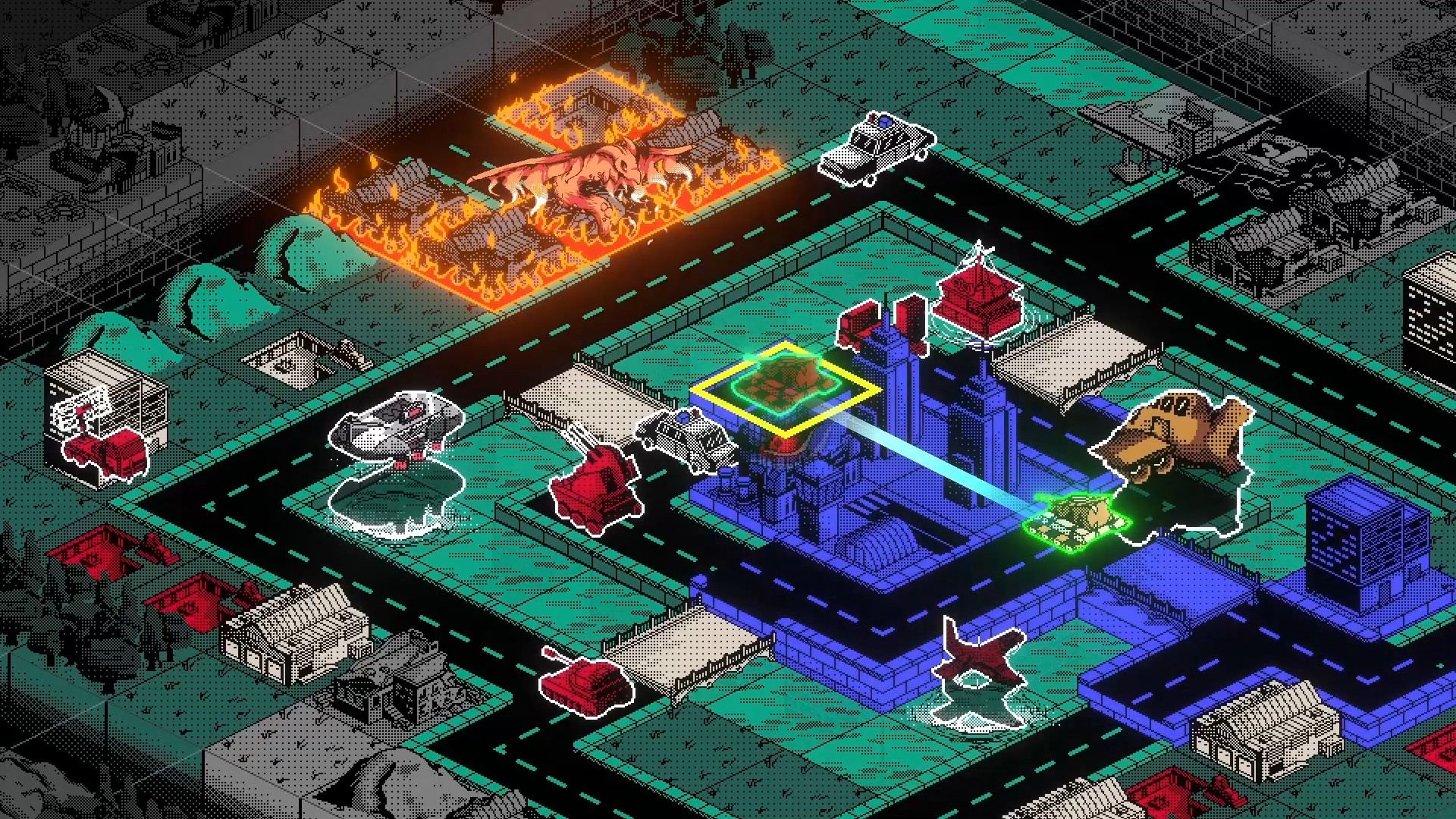
“Instead of throwing mechanics at you all at once, Kaiju Wars takes its time without over-tutorialising tactics basics.”
Unlike similar Kaiju tactics games like Into the Breach, Kaiju Wars focuses your attention on only one or two monsters. Rarely is your goal to take out the Kaiju. Even after depleting their health, they’ll often return after a few turns. Rather, you must protect a researcher until they attain a set amount of science points and create an anti-kaiju serum. You’ll quickly learn that your priority strategy is slowing down the Kaiju as much as possible. As a result, the game is always pushing you to think four or five moves ahead.
Kaiju Wars has a hefty campaign with a wonderful variety of challenges and scenarios to introduce its mechanics. As mayor, you are immediately thrown in with a cast of wacky characters. You’ll meet an overbearing 80s macho general, a closed-off scientist, a chaotic experimental weapon researcher, and more.
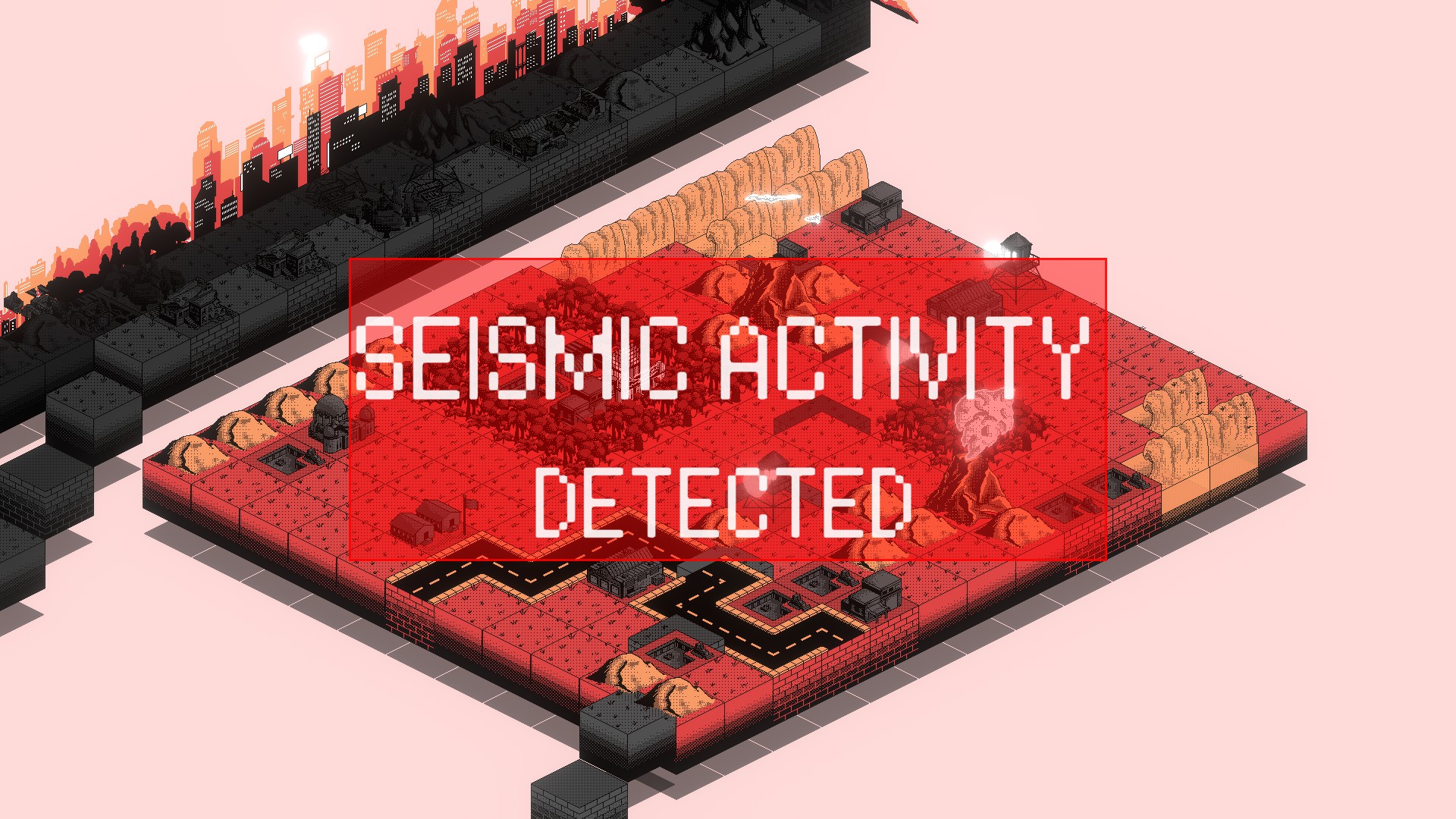
Instead of throwing mechanics at you all at once, Kaiju Wars takes its time without over-tutorialising tactics basics. From here, you travel the world, winning elections in cities soon to be attacked and stopping the mysterious Kaiju invasions. There’s some basic conspiracy and world-building here, but while it is flavorful, I never found it particularly interesting or original. But that is not why you are playing. And you can skip it all if you wish with a quick check in the options.
“Kaiju Wars gives you an impressive list of units and abilities to fend off Kaiju attacks.”
Every map is different with limitations and different science point goals, with some placing restrictions on units and resources. Several missions even prevent you from creating units at all, forcing you to strategically use your limited economy to build structures to distract the kaiju for long enough to achieve the necessary science points. Additionally, environmental features like mountains, hills, forests, and water sources all place limits on movement and access to certain areas of the map.
Kaiju Wars gives you an impressive list of units and abilities to fend off Kaiju attacks. These include tanks, missiles, infantry, fighters, bombers, aa guns, artillery, a suite of experimental weapons, and more. Each unit has advantages and disadvantages, with some better geared toward slowing down Kaiju, while others function better in certain terrain. Some can only hit enemies on the ground or in the air. All units can also be upgraded permanently into single ace units with medals earned after completing missions.
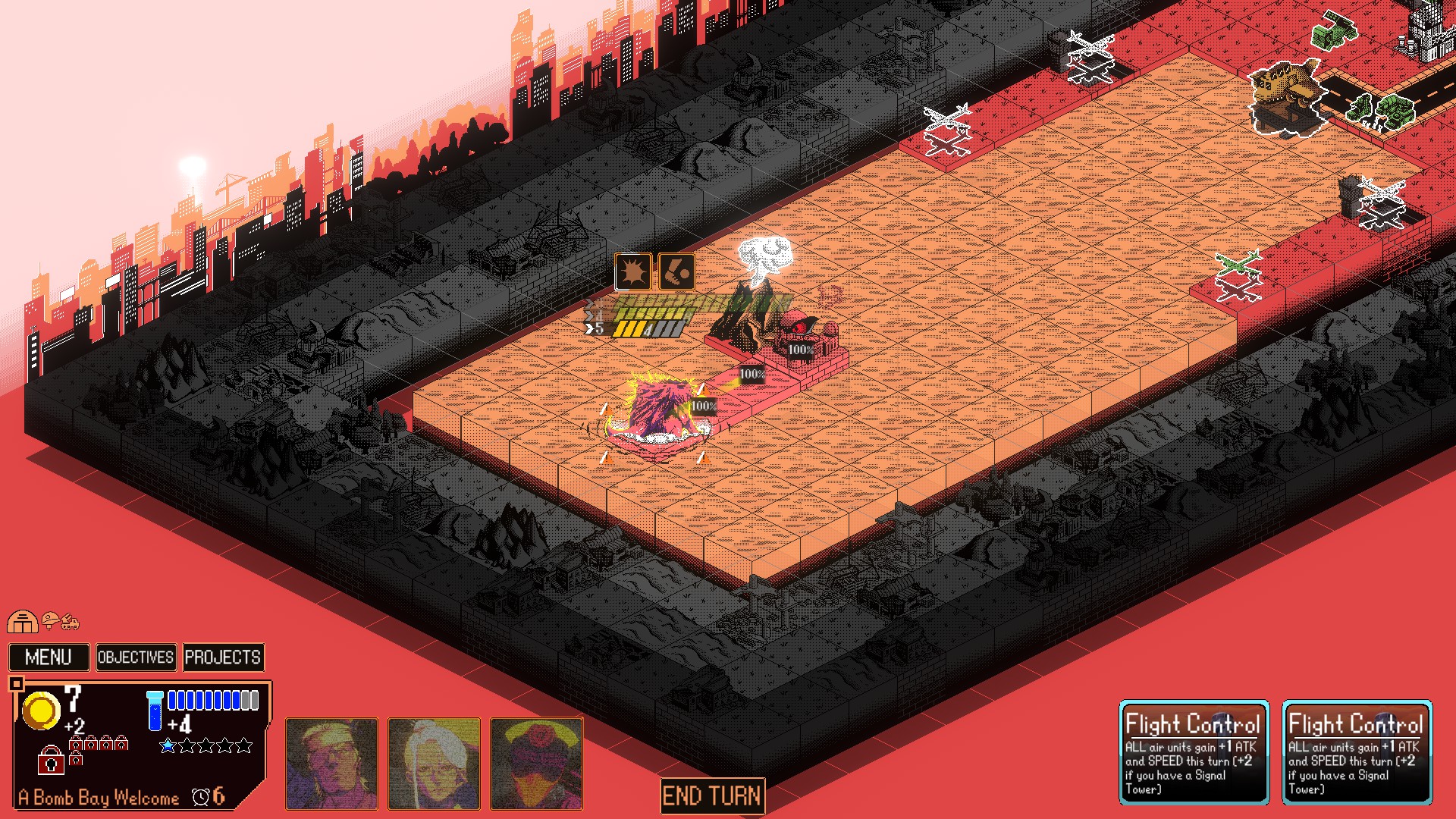
In addition to creating units, Kaiju Wars also provides project cards and researchers. The former can grant everything from a free building to a science point or even direct damage to Kaiju. Researchers provide static bonuses to science production, and you can select from a several at the beginning of each mission. As you play, you unlock more researchers and slots to have multiple researchers simultaneously.
“Perhaps the most interesting idea Kaiju Wars brings to the table is how it handles unit creation.”
At the beginning of each turn, you collect science and money from buildings that can provide it. Then you choose a project card. From here, you can move units, attack the Kaiju, build more units, and construct bases that produce units. Additionally, in some cases, you can build experimental weapons in labs that cost no money but time to create. The Kaiju’s approximant movements and attacks are displayed before they take their turn. This allows for an extra layer of planning without giving away everything.
Perhaps the most interesting idea Kaiju Wars brings to the table is how it handles unit creation. Unlike similar tactics games like Advance Wars, all units cost the three currency and are built in one turn, and cannot move until the next turn. However, if that unit is destroyed, it will cost only one currency for the rest of the mission to repair and rebuild.
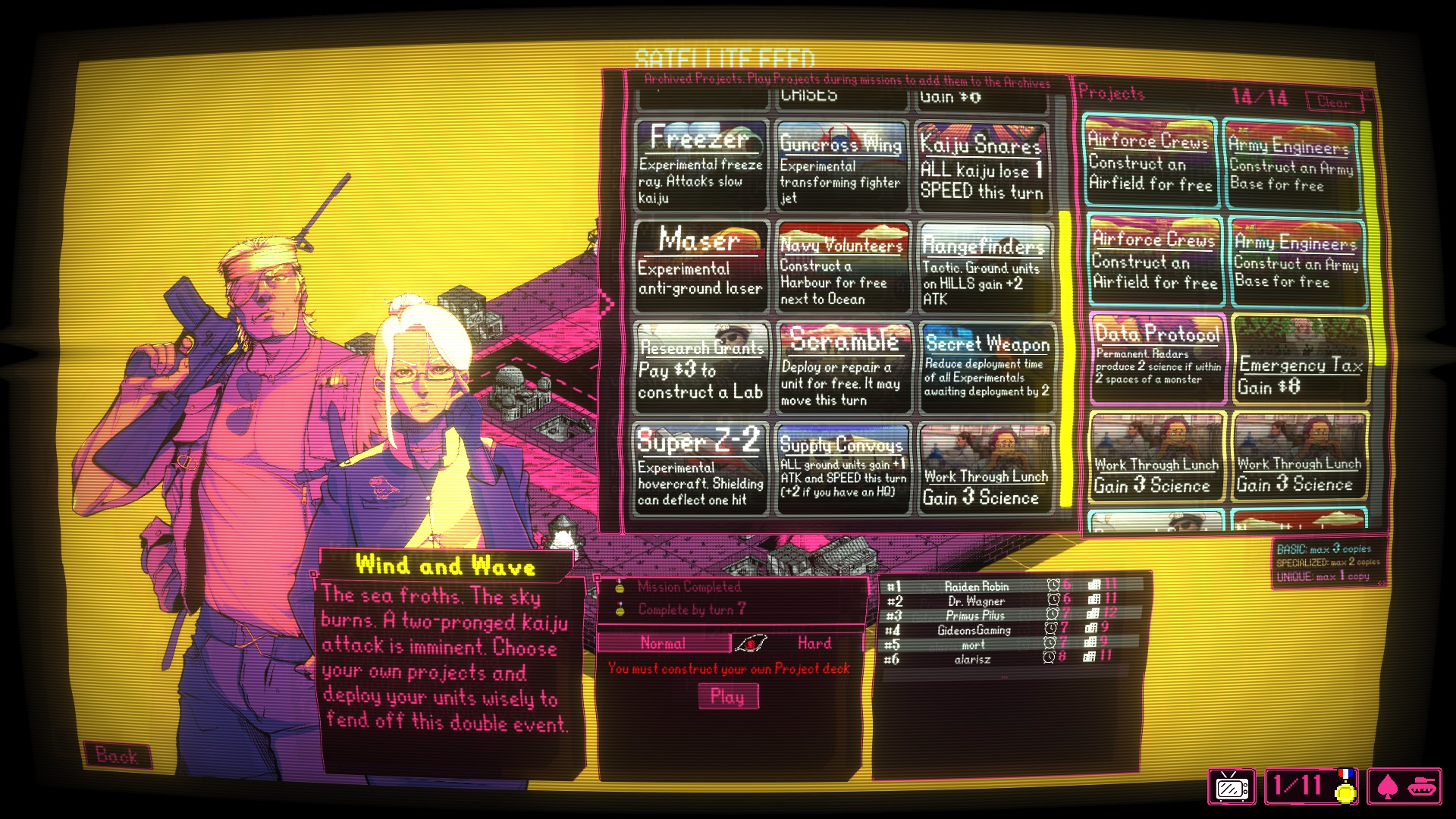
This makes units more expendable, training you never to hoard units, thus creating a less punishing experience for mistakes, and for higher-level play subtly suggesting that you build less. In most best-case scenarios, you can only attack with 4-6 units in one turn. So even if you lose units, they can be cheaply replaced and sent back to the fight without losing much of your damage output. It’s better to keep your numbers smaller and save money to build more labs to end the mission faster. It’s an excellent multifaceted system that adds flexibility and quality of life to the experience.
“Despite its mechanical complexity, Kaiju Wars effortlessly introduces its ideas at a solid pace, ensuring to never overwhelm you.”
The other pivotal strategic risk versus reward component is the breach mechanic. Just as you have project cards to draw from every turn, so does the Kaiju. One of the dangerous dark projects it can pick is a security breach -1 or -2. Each lab gives you a certain number of breaches you can withstand in that lab, and if it reaches zero, the Kaiju will head straight toward that lab. You can move labs, but this takes time to reach another in an escape vehicle, and in the meantime you will produce no money or resources.
It then becomes a game of maximizing profits and science and minimizing potential risk. As another added layer, you also must plan your escape from the beginning of each mission, creating a path of nearby labs or weaving together chains of bases that can boost your evacuation van’s movement per turn.
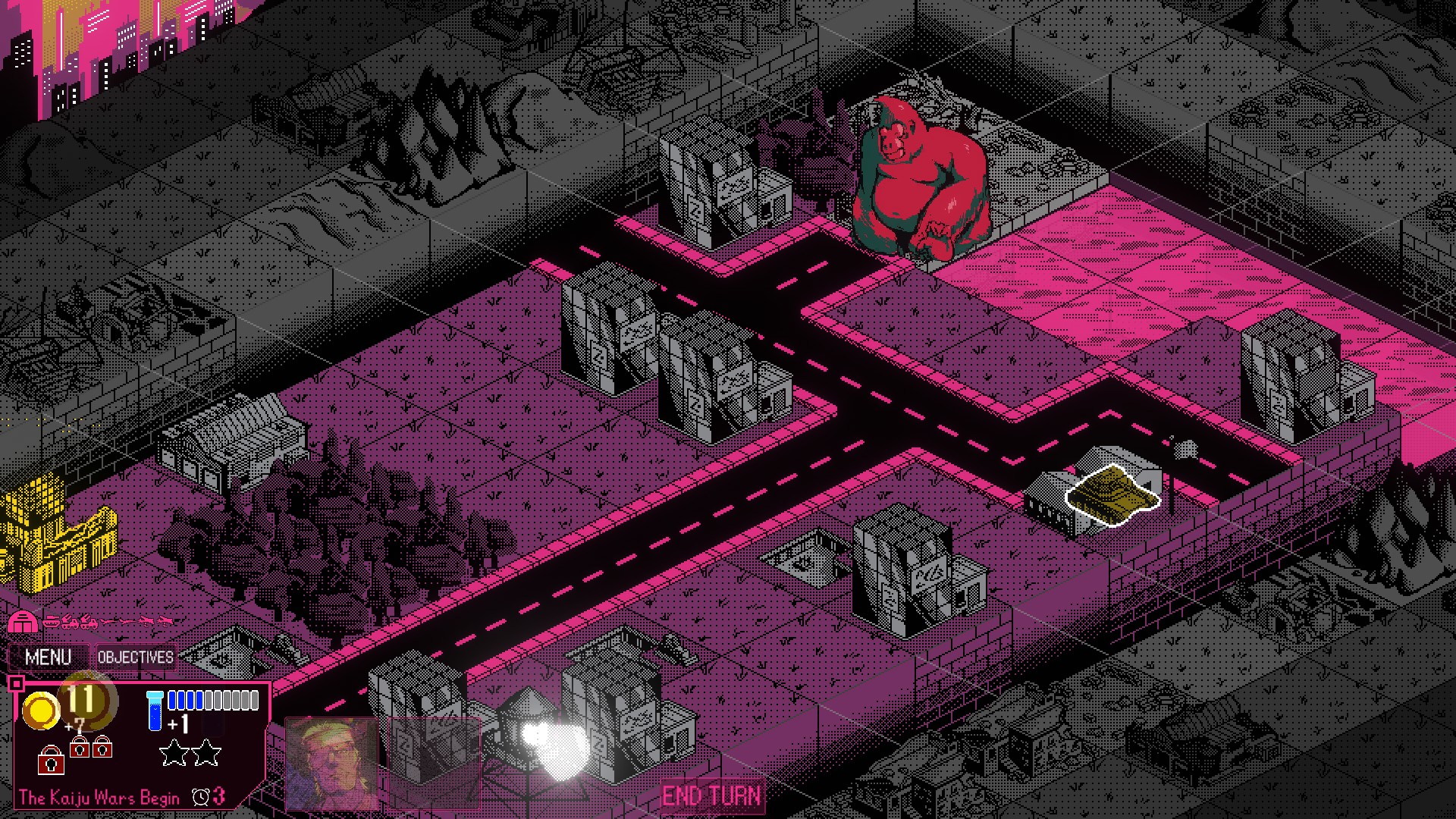
Despite this mechanical complexity, Kaiju Wars effortlessly introduces these ideas at a solid pace, ensuring to never overwhelm you. Before I realized it, I was drafting up plans in my head with ease. For a genre well known for its inaccessibility, I have yet to play a title more willing to introduce low-skilled players to high-level play.
“Kaiju destruction has never looked so good as the highly animated monsters trample city blocks underfoot.”
Beyond its mechanics, Kaiju Wars also to some wonderful retro beats and its gorgeous limited palette and a crunchy pixel look. Kaiju destruction has never looked so good as the highly animated monsters trample city blocks underfoot. Punchy unit attacks rival even 13 Sentinels: Aegis Rim’s SFX. The only visual complaint I can think of is some lacklustre character portraits for story moments and some oddly mismatched UI elements.
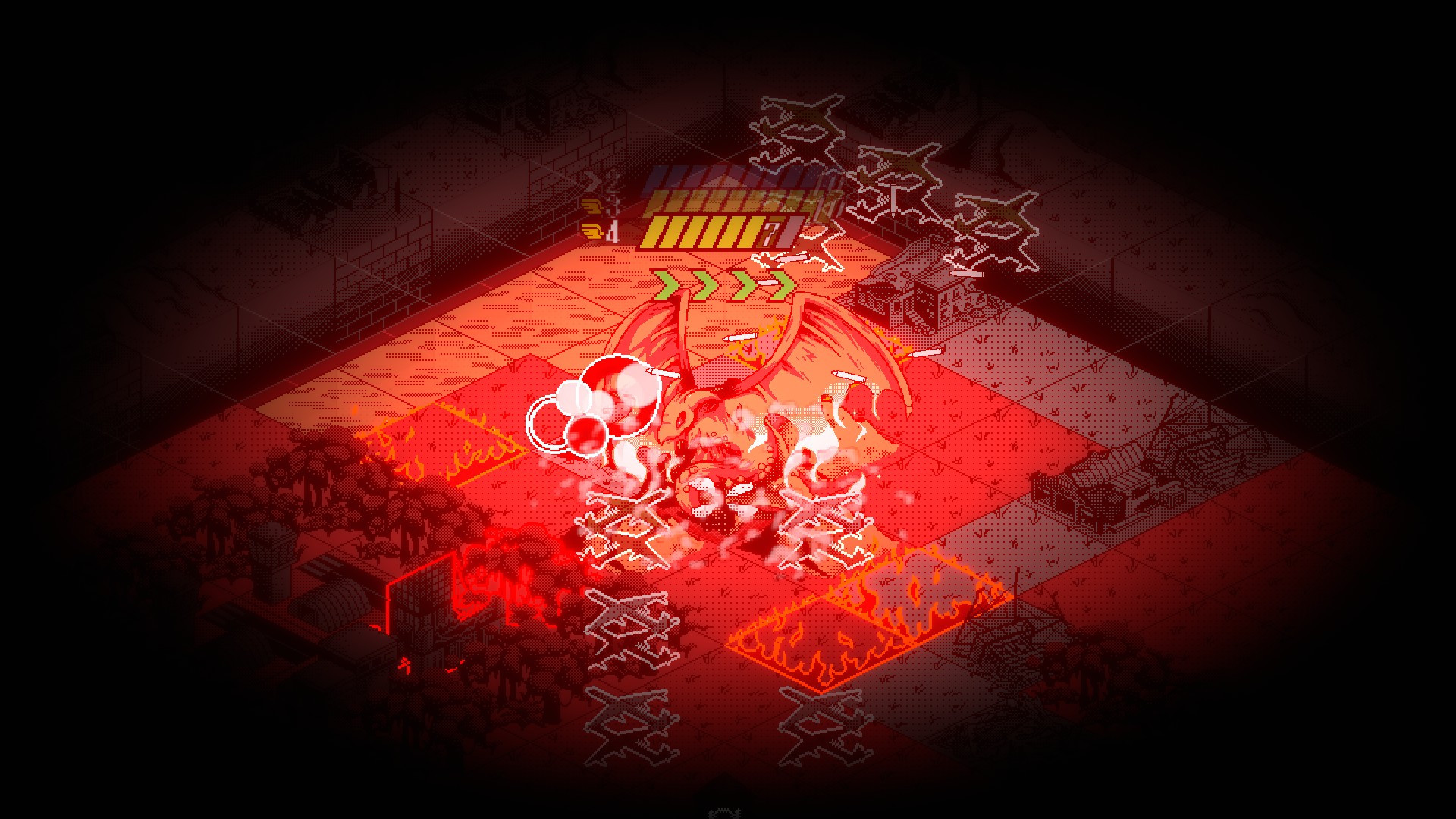
I would also be remised not to mention the lavishly rendered main menu. Foolish Mortals outdid themselves with a 3D approximation of a crisis room where you might sit as the mayor of various kaiju-afflicted cities. There are plenty of cute interactable objects, posters of other upcoming games by the publisher, a wall of tv screens displaying fake news broadcasts, links to public domain Kaiju movies, and more.
“Kaiju Wars is a great tense strategic experience that is incredibly accessible with just enough randomness always to keep you on your toes.”
Aside from the campaign, there is also a custom map maker, optional missions, weekly challenge maps, and even an asymmetrical multiplayer mode where one player plays as the Kaiju and the other as the military. Kaiju Wars could easily keep players busy for far beyond its 30-hour runtime.
That is not to say the game is perfect, as its lengthy campaign suffers from being repetitive despite the occasional level mixing up the format. Still, as a player who loves narrative progression, that might be more of me problem. However, I love the balance between randomness and predictability in Kaiju Wars to keep me constantly shifting my plans. Unfortunately, some missions are decided on chance or specific moves to win, delving into the tedious, frustrating design.
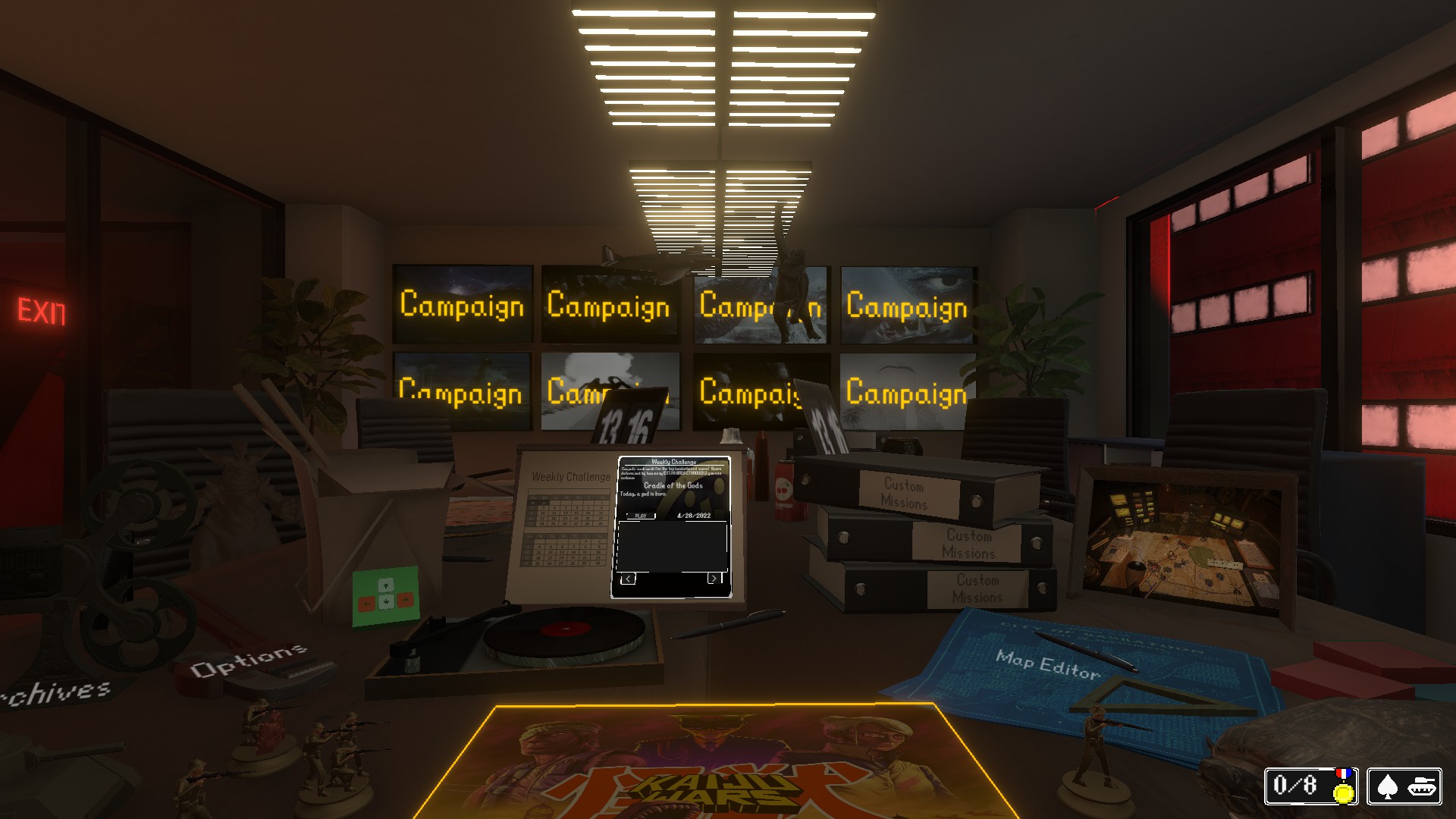
As a casual fan of tactics and strategy games, I was more than a little hesitant to jump into Kaiju Wars. But, I enjoyed my time and gained a greater appreciation for the genre. It is a great tense strategic experience that is welcoming and predictable enough to encourage complicated plans, with just enough randomness always to keep you on your toes.
You can pick up Kaiju Wars for the Nintendo Switch, Xbox, PlayStation and Steam right now.
*Disclaimer: Reviewed on PC, code was provided by the Publisher.





